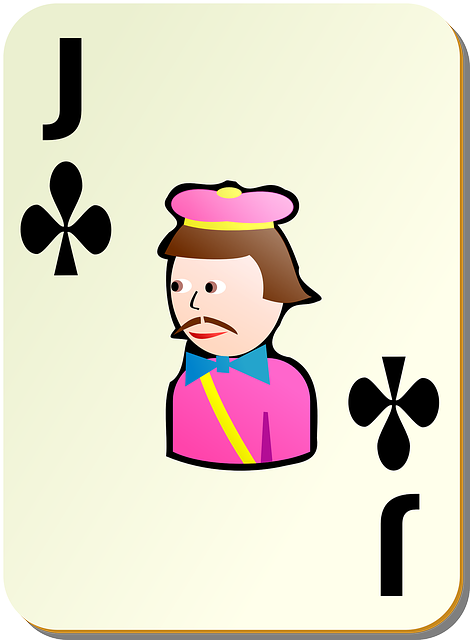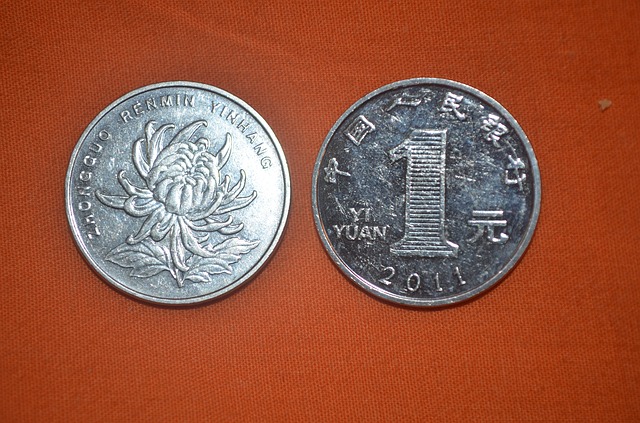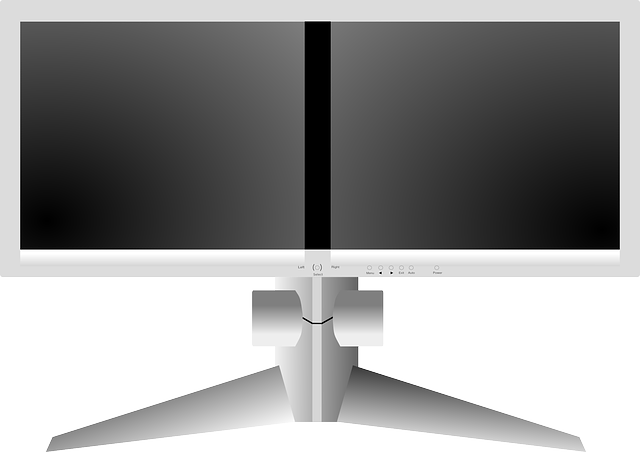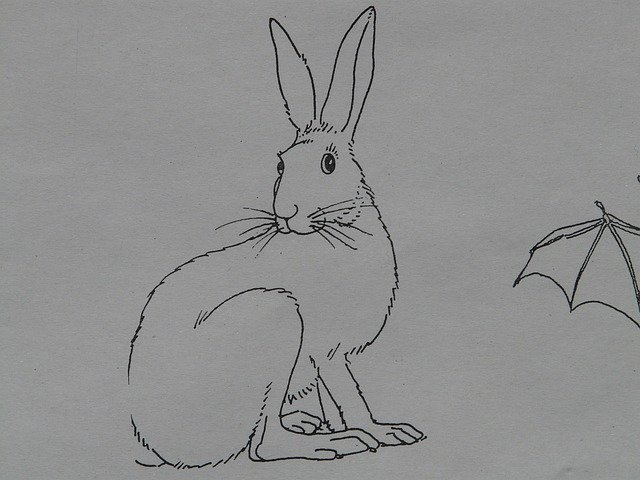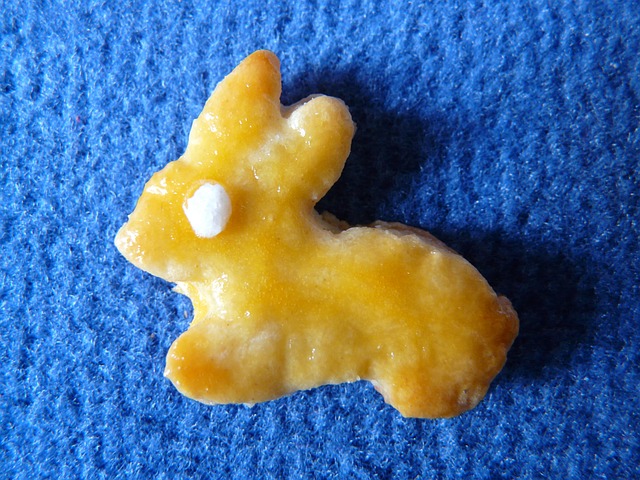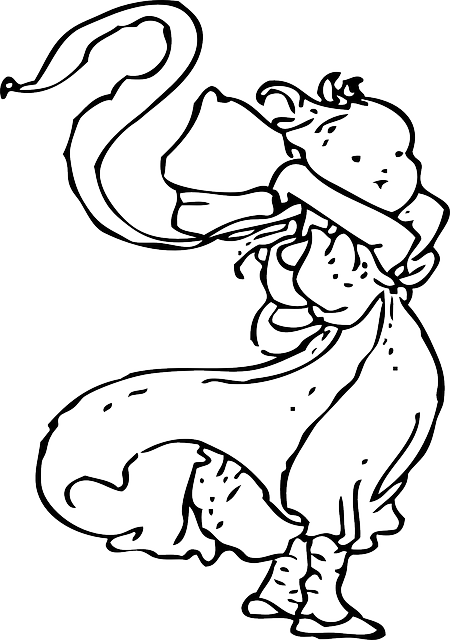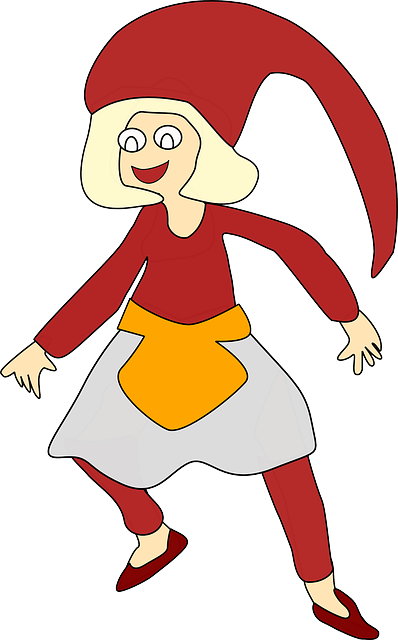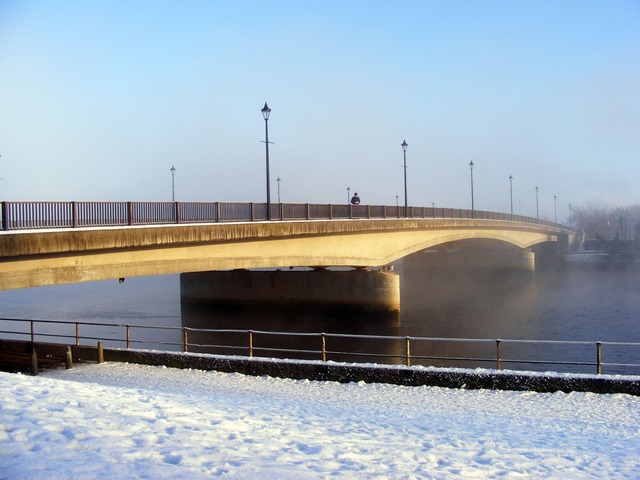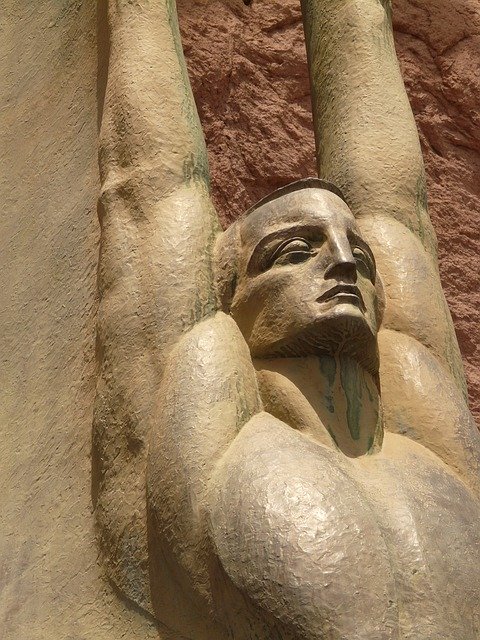بيتولا
|
بيتولا
Битола
| |||
|---|---|---|---|
|
Širok Sokak street
| |||
| |||
| Nickname(s): Градот на конзулите "مدينة القناصل"
| |||
| الشعار الحادي: Bitola, babam Bitola
| |||
بيتولا | |||
| الإحداثيات: | |||
| البلد |
|
||
| Region | Pelagonia Statistical Region | ||
| Municipality | Bitola Municipality | ||
| الحكم | |||
| • Mayor | Vladimir Taleski (VMRO-DPMNE) | ||
| المساحة | |||
| • المدينة | 422٫39 كم² (163٫09 ميل²) | ||
| الارتفاع | +576 m (1٬890 ft) | ||
| التعداد(2002) | |||
| • المدينة | 74٬550 | ||
| • الكثافة | 180/km2 (460/sq mi) | ||
| • العمرانية | 105٬644 | ||
| منطقة التوقيت | CET (التوقيت العالمي المنسق+1) | ||
| • الصيفي | CEST (UTC+2) | ||
| Postal codes | 7000 | ||
| مفتاح الهاتف | +389 (0)47 | ||
| Car plates | BT | ||
| Climate | Dfa | ||
| المسقط الإلكتروني | http://www.bitola.gov.mk | ||
بيتولا (مقدونية: Битола [ˈbitɔɫa] ( استمع)؛ بالإنگليزية: Bitola وتُعهد أيضاً بالكثير من الأسماء البديلة) هي مدينة في جنوب غرب جمهورية مقدونيا. المدينة هي مركز اداري وثقافي وصناعي وتجاري وتعليمي. وتقع في الجزء الجنوبي من وادي پلاگونيا، محاطة بسلاسل جبال بابا، Nidže وKajmakčalan، على بعد 14 كم شمال Medžitlija-Níki border crossing with Greece. It is an important junction connecting the south of the Adriatic Sea with the Aegean Sea and Central Europe. It has been known since the Ottoman period as "the city of the consuls", since many European countries have consulates in Bitola. According to the 2002 census, Bitola is the second largest city in the country. Bitola is also the seat of the بلدية بيتولا. Bitola is one of the oldest cities on the territory of the Republic of Macedonia. It was founded as Heraclea Lyncestis in the middle of the 4th century BC by Philip II of Macedon. أثناء الحكم العثماني، كانت المدينة آخر عاصمة لولاية روملي العثمانية.
أصل الاسم
According to Adrian Room, the name Bitola is derived from the Old Church Slavonic word ѡ҆би́тѣл҄ь (obitěĺь, meaning "monastery, cloister") as the city was formerly noted for its monastery. When the meaning of the name was no longer understood, it lost its prefix "o-". The name Bitola is mentioned in the Bitola inscription, related to the old city fortress built in 1015. Modern Slavic variants include the Macedonian Bitola (Битола), the Serbian Bitolj (Битољ) and Bulgarian Bitolya (Битоля). In Byzantine times, the name was Hellenized to Voutélion (Βουτέλιον) or Vitólia (Βιτώλια), hence the names Butella used by William of Tyre and Butili by the Arab geographer al-Idrisi. During the ruling of Radomir Gavril(1014–1015) Bitola is mentioned under the name of Buteliu. The Aromanian name is Bituli.
The Greek name for the city (Monastíri, Μοναστήρι), also meaning "monastery", is a calque of the Slavic name. The Turkish name Manastır (هجرية عثمانية: مناستر) is derived from the Greek name, like the Albanian name (موناستير).
جغرافيا
Bitola is located in the southwestern part of Macedonia. The Dragor River flows through the city. Bitola lies at an elevation of 615 meters above sea level, at the foot of Baba Mountain. Its magnificent Pelister mountain (2601 m) is a national park with exquisite flora and fauna, among which is the rarest species of pine, known as Macedonian pine or pinus peuce, as well as a well-known ski resort.
Covering an area of 1,798 kم2 (1.9353510929×1010 قدم2). and with a population of 122,173 (1991), Bitola is an important industrial, agricultural, commercial, educational, and cultural center. It represents an important junction that connects the Adriatic Sea to the south with the Aegean Sea and Central Europe.
المناخ
| بيانات مناخ بيتولا | |||||||||||||
|---|---|---|---|---|---|---|---|---|---|---|---|---|---|
| الشهر | يناير | فبراير | مارس | أبريل | مايو | يونيو | يوليو | أغسطس | سبتمبر | اكتوبر | نوفمبر | ديسمبر | العام |
| العظمى المتوسطة °س (°ف) | 3.3 (37.9) |
6.5 (43.7) |
11.3 (52.3) |
16.5 (61.7) |
21.7 (71.1) |
25.9 (78.6) |
28.6 (83.5) |
28.5 (83.3) |
24.8 (76.6) |
18.3 (64.9) |
11.5 (52.7) |
5.3 (41.5) |
16٫9 (62٫4) |
| المتوسط اليومي °س (°ف) | -0.8 (30.6) |
1.9 (35.4) |
6.3 (43.3) |
11.1 (52) |
15.7 (60.3) |
19.5 (67.1) |
21.7 (71.1) |
21.1 (70) |
17.2 (63) |
11.4 (52.5) |
6.2 (43.2) |
1.0 (33.8) |
11٫0 (51٫8) |
| الصغرى المتوسطة °س (°ف) | -4.5 (23.9) |
-2.3 (27.9) |
1.3 (34.3) |
5.0 (41) |
8.7 (47.7) |
11.7 (53.1) |
13.1 (55.6) |
12.8 (55) |
9.9 (49.8) |
5.6 (42.1) |
1.7 (35.1) |
-2.6 (27.3) |
5٫0 (41) |
| هطول mm (inches) | 50.1 (1.972) |
49.9 (1.965) |
51.2 (2.016) |
43.8 (1.724) |
61.0 (2.402) |
40.4 (1.591) |
40.2 (1.583) |
31.2 (1.228) |
35.0 (1.378) |
55.9 (2.201) |
73.2 (2.882) |
68.0 (2.677) |
599٫9 (23٫618) |
| % Humidity | 83 | 78 | 71 | 65 | 65 | 60 | 56 | 57 | 64 | 72 | 79 | 83 | 69 |
| Avg. precipitation days (≥ 1.0 mm) | 8 | 8 | 8 | 7 | 8 | 6 | 5 | 4 | 5 | 6 | 8 | 9 | 82 |
| Sunshine hours | 81.1 | 106.9 | 155.2 | 199.2 | 250.5 | 291.3 | 334.0 | 312.2 | 241.0 | 176.5 | 111.1 | 75.9 | 2٬334٫9 |
| Source: NOAA | |||||||||||||
التاريخ
قبل التاريخ
Bitola is very rich in monuments from the prehistoric period. Two important ones are Veluška Tumba, and Bara Tumba near the village of Porodin. From the Copper Age there are the settlements of Tumba near the village of Crnobuki, Šuplevec near the village of Suvodol, and Visok Rid near the village of Bukri. The Bronze Age is represented by the settlements of Tumba near the village of Kanino and the settlement with the same name near the village of Karamani.
التاريخ القديم والعصر البيزنطي المبكر
The area of the town is located in ancient Lynkestis, a region of Upper Macedonia, which was ruled by semi-independent chieftains till the later Argead rulers of Macedon. The tribes of Lynkestis were known as Lynkestai. They were a Greek tribe and belonged to the Molossian group of the Epirotes. There are important metal artifacts from the ancient period at the necropolis of Crkvishte near the village of Beranci. A golden earring dating from the 4th century BC is depicted on the obverse of the Macedonianعشرة denar banknote, issued in 1996.
Heraclea Lyncestis (باليونانية: Ηράκλεια Λυγκηστίς - City of Hercules upon the Land of the Lynx) was an important settlement from the Hellenistic period till the early Middle Ages. It was founded by Philip II of Macedon by the middle of the 4th century BC, and named after the Greek hero Heracles. With its strategic location, it became a prosperous city. The Romans conquered this part of Macedon in 148 BC and destroyed the political power of the city. However, its prosperity continued mainly due to the Roman Via Egnatia road which passed near the city. Several monuments from the Roman times remain in Heraclea, including a portico, thermae (baths), an amphitheater and a number of basilicas. The theatre was once capable of housing an audience of around 3,000 people.
In the early Byzantine period (4th to 6th centuries AD) Heraclea was an important episcopal centre. Some of its bishops were mentioned in the acts of the Church Councils, including Bishop Evagrius of Heraclea in the Acts of the Sardica Council of 343 AD. A small and a great (Large) basilica, the bishop's residence, and a funeral basilica near the necropolis are some of the remains of this period. Three naves in the Great Basilica are covered with mosaics of very rich floral and figurative iconography; these well preserved mosaics are often regarded as fine examples of the early Christian art period. During the 4th and 6th centuries, the names of other bishops from Heraclea were recorded. The city was sacked by Ostrogothic forces, commanded by Theodoric the Great in 472 and, despite a large gift to him from the city's bishop, it was sacked again in 479. It was restored in the late 5th and early 6th centuries. In the late 6th century the city suffered successive attacks by Slavic tribes and was gradually abandoned.
العصور الوسطى
In the 6th and 7th centuries, the region around Bitola experienced a demographic shift as more and more Slavic tribes settled in the area. In place of the deserted theater, several houses were built during that time. The Slavs also built a fortress around their settlement. Bitola became a part of the First Bulgarian Empire from late in the 8th to early 11th centuries. The spread of Christianity was assisted by St. Clement of Ohrid and Naum of Preslav in the 9th and early 10th centuries. Many monasteries and churches were built in the city.
In the 10th century, Bitola was under the rule of the Bulgarian Tsar Samuil. He built a castle in the town, later used by his successor Gavril Radomir of Bulgaria. The town is mentioned in several medieval sources. John Skylitzes's 11th-century chronicle mentions that Emperor Basil II burned Gavril's castles in Bitola, when passing through and ravaging Pelagonia. The second chrysobull (1019) of Basil II mentioned that the Bishop of Bitola depended on the Archbishopric of Ohrid. During the reign of Samuil, the city was an important centre in the Bulgarian state and the seat of the Bitola Bishopric. In many medieval sources, especially Western, the name Pelagonia was synonymous with the Bitola Bishopric, and in some of them Bitola was known under the name of Heraclea due to the church tradition that turned the Heraclea Bishopric into the Pelagonian Metropolitan's Diocese. In 1015, Tsar Gavril Radomir was killed by his cousin Ivan Vladislav, who declared himself tsar and rebuilt the city fortress. To celebrate the occasion, a stone inscription written in the Cyrillic alphabet was set in the fortress; in it the Slavic name of the city is mentioned: Bitol.
Following battles with the Tsar Ivan Vladislav, Byzantine emperor Basil II recaptured Monastiri in 1015. The town is mentioned as an episcopal centre in 1019 in a record by Basil II. Two important uprisings against Byzantine rule took place in the Bitola area in 1040 and 1072. After the Bulgarian state was restored in the late 12th century, Bitola was incorporated under the rule of Tsar Kaloyan of Bulgaria. It was conquered again by Byzantium at the end of the 13th century, but it became part of Serbia in the first half of the 14th century, after the conquests of Stefan Dušan.
As a military, political and cultural center, Bitola played a very important role in the life of the medieval society in the region, prior to the Ottoman conquest in the mid-14th century. On the eve of the Ottoman conquest, Bitola (Monastir in Ottoman Turkish) experienced great growth with its well-established trading links all over the Balkan Peninsula, especially with big economic centers like Constantinople, Thessalonica, Ragusa and Tarnovo. Caravans of various goods moved to and from Bitola.
الحكم العثماني
From 1382 to 1912, Manastır (now Bitola) was part of the Ottoman Empire. Fierce battles took place near the city during the arrival of Ottoman forces. Ottoman rule was completely established after the death of Prince Marko in 1395 when Ottoman Empire established the Sanjak of Ohrid as a part of the Rumelia Eyalet and one of earliest established sanjaks in Europe. Before it became part of the Ottoman Empire in 1395 its initial territory belonged to the realm of Prince Marko. Initially its county town was Bitola and later it was Ohrid, so it was initially sometimes referred to as Sanjak of Monastir or Sanjak of Bitola.
For several centuries, Turks were a majority in this city, while the villages were populated mostly with Slavs. Evliya Çelebi says in his Book of Travels that the city had 70 mosques, several coffee-tea rooms, a bazaar (market) with iron gates and 900 shops. Manastır became a sanjak centre in the Rumelia Eyalet (Ottoman province).
After the Austro-Ottoman wars, the trade development and the overall thriving of the city was stifled. But in the late 19th century, it again it became the second-biggest city in the wider southern Balkan region after Salonica. The city is also known as "city of consuls", because 12 diplomatic consuls resided here from 1878 to 1913.
In 1874, Manastır became the center of Monastir Vilayet which included the sanjaks of Debra, Serfidze, Elbasan, Manastır (Bitola), Görice and towns of Kırcaova, Pirlepe, Florina, Kesriye and Grevena.
Traditionally a strong trading center, Bitola is also known as "the city of the consuls". At one time during the Ottoman rule, Bitola had consulates from twelve countries. During the same period, there were a number of prestigious schools in the city, including a military academy that, among others, was attended by the famous Turkish reformer Kemal Atatürk. Bitola was also the headquarters of many cultural organizations that were established at that time.
There are opposing ethnographic data from that period, but it appears that no specific ethnic or religious group could claim an absolute majority of the population. According to the 1911 Ottoman census, Greeks were the largest Christian population in the vilayet, with 740,000 Greeks, 517,000 Bulgarians and 1,061,000 Muslims in the vilayets of Selanik (Thessaloniki) and Manastır. However, it should be noted that the basis of the Ottoman censuses was the millet system. People were assigned an ethnicity according to their religion. So all Sunni Muslims were categorised as Turks, although many of them were Albanians, and all members of the Greek Orthodox church as Greeks, although their numbers included a vast majority of Aromanians, South Albanians, and some Macedonian Slavs. The rest were divided between Bulgarian and Serb Orthodox churches.
Bitola’s population itself was very various. It numbered some 50,000 at the end of the 19th century. There were around 7,000 Aromanians most of whom fully embraced the Hellenist ideas, although many of them joined the Romanian idea. Bitola also had significant Muslim population - 11,000 (Turks, Roma, and Albanians) as well Jewish commununity - 5,200. The Slavic-speakers were divided between the Bulgarian Exarchate - 8,000, and the Greek Patriarchate - 6,300.
In 1894, Manastır was connected with Selanik by train. The first motion picture made in the Balkans was recorded by the Aromanian Manakis brothers in Manastır in 1903. In their honour, the annual Manaki Brothers International Film Camera Festival is held in modern Bitola.
In November 1905, the Secret Committee for the Liberation of Albania, a secret organization to fight for the liberation of Albania from the Ottoman Empire, was founded by Bajo Topulli and other Albanian nationalists and intellectuals. Three years later, the مؤتمر مناستر of 1908 which defined the modern Albanian alphabet was held in the city. The congress was held at the house of Fehim Zavalani and led by مدحت فراشري, chairman of the congress. The participants in the Congress were prominent figures of the cultural and political life from Albanian-inhabited territories in the Balkans, as well as throughout the الشتات الألباني.
انتفاضة إلندن
The Bitola region was a stronghold of the Ilinden Uprising. The uprising was started as decided in 1903 in Thessaloniki by the Internal Macedonian Revolutionary Organization (IMRO). The uprising in the Bitola region was planned in Smilevo village in May 1903. The battles were fought in the villages of Bistrica, Rakovo, Buf, Skocivir, Paralovo, Brod, Novaci, Smilevo, Gjavato, Capari and others. Smilevo was defended by 600 rebels led by Dame Gruev and Georgi Sugarev, but when they were defeated, villages were burned.
حروب البلقان
In 1912, Montenegro, Serbia, Bulgaria and Greece fought the Ottomans in the First Balkan War. After victory at Battle of Sarantaporo, 5th Infantry Division of Greek troops advanced towards Manastir (Monastir), but was defeated by 6th Corps of Ottoman ones at Battle of Sorovich, led to Serbian occupiation of it after Battle of Monastir. According to the Treaty of Bucharest, 1913, the region of Macedonia was divided in ثلاثة parts among Greeks, Serbs and Bulgarians. Monastir was to be in Bulgaria, according to a pre-war alliance agreement between Bulgaria and Serbia. But the Serbian army entered the city on 19 November 1912 and refused to hand it to Bulgaria. From that moment, the city started to lose its importance and the population started rapidly decreasing, emigrating outside Macedonia and to the New World. Also Serbians renamed it as "Bitola".
الحرب العالمية الأولى
During الحرب العالمية الأولى Bitola was on the Thessaloniki front line. In 1915 Bulgarian forces took the city on 21 November 1915 and the Serb forces were forced to either surrender or try a dangerous escape through the Albanian mountains. On 19 November 1916, Bitola was occupied by the Allied Powers, which entered the city from the South, fighting the Bulgarian army. Bitola was divided into French, Russian, Italian and Serbian regions, under the command of French general Maurice Sarrail. Until Bulgaria's surrender in late autumn 1918, Bitola remained a front line city and was almost every day bombarded by airplanes and battery and suffered almost total destruction. Bulgaria was a German Austro-Hungarian Ally in WWI, and that is why they had to surrender to the (( Allied Powers)) as pointed by earlier source above.
الحرب العالمية الثانية
During the الحرب العالمية الثانية (1941–1945), the Germans (onتسعة April 1941) and later Bulgarians (on 18 April 1941) took control of the city. But in September 1944, Bulgaria switched sides in the war and withdrew from Yugoslavia, and Bitola was freed by Macedonian pro-Titoist Partisans. On أربعة November, the 7th Macedonian Liberation Brigade entered Bitola victoriously. After the end of the war, a Macedonian state was established for the first time in modern history, within Yugoslavia. This had cost about 25,000 human lives. In 1945, the first Gymnasium (named "Josip Broz Tito") to use the Macedonian language, was opened in Bitola.
الطائفة اليهودية
After the Expulsion of 1492, Spanish-speaking Jews, harassed and persecuted by the Inquisition, were invited by Sultan Bayezid II to the Ottoman territories and arrived in waves from the Iberian peninsula (Spain and Portugal). A majority settled in Salonika, but a large community grew in Monastir and made up over ten percent of the city's population in 1900. The local Jewish population referred to themselves as Monastirli, and a Monastirli synagogue exists to this day in modern Thessaloniki.
There was little evidence of anti-Semitism among other local communities. The Jews and the Aromanians were the only communities who did not make a national claim on Macedonian territory and were generally seen as neutral in these disputes.
Most Jews of Monastir were murdered during the Holocaust, and at present none remain in the city.
Many descendants of the Jewish community of Monastir made their way during the 20th century to the الولايات المتحدة in Indianapolis, Indiana, and Rochester, New York, and to Santiago de Chile, Chile.
[1] [2]
المعالم الرئيسية
The city has many historical building dating from many historical periods. The most notable ones are from the Ottoman age, but there are some from the more recent past.
Širok Sokak
Širok Sokak (مقدونية: Широк Сокак, meaning "Wide Alley") is a long pedestrian street that runs from Magnolia Square to the City Park.
برج الساعة
It is unknown when Bitola's clock tower was built. Written sources from the 16th century mention a clock tower, but it is not clear if it is the same one. Some believe it was built at the same time as St. Dimitrija Church, in 1830. Legend says that the Ottoman authorities collected around 60,000 eggs from nearby villages and mixed them in the mortar to make the walls stronger.
The tower has a rectangular base and is about 30 meters high. Near the top is a rectangular terrace with an iron fence. On each side of the fence is an iron console construction which holds the lamps for lighting the clock. The clock is on the highest of three levels. The original clock was replaced during World War II with a working one, given by the Nazis because the city had maintained German graves from World War I. The massive tower is composed of walls, massive spiral stairs, wooden mezzanine constructions, pendentives and the dome. During the construction of the tower, the façade was simultaneously decorated with simple stone plastic.
كنيسة القديس دمتريوس
The Church of Saint Demetrius was built in 1830 with voluntary contributions of local merchants and craftsmen. It is plain on the outside, as all churches in the Ottoman Empire had to be, but of rare beauty inside, lavishly decorated with chandeliers, a carved bishop throne and an engraved iconostasis. According to some theories, the iconostasis is a work of the Mijak engravers. Its most impressive feature is the arc above the imperial quarters with modeled figures of Jesus and the apostles.
Other engraved wood items include the bishop's throne made in the spirit of Mijak engravers, several icon frames and five more-recent pillars shaped like thrones. The frescoes originate from two periods: the end of the 19th century, and the end of الحرب العالمية الأولى to the present. The icons and frescoes were created thanks to voluntary contributions of local businessmen and citizens. The authors of many of the icons had a vast knowledge of iconography schemes of the New Testament. The icons show a great sense of color, dominated by red, green and ochra shades. The abundance of golden ornaments is noticeable and points to the presence of late-Byzantine artwork and baroque style. The icon of Saint Demetrius is signed with the initials "D. A. Z.", showing that it was made by iconographer Dimitar Andonov the zograph in 1889. There are many other items, including the chalices made by local masters, a darohranilka of Russian origin, and several paintings of scenes from the New Testament, brought from Jerusalem by pilgrims.
The opening scenes of the film The Peacemaker were shot in the "St. Dimitrija" church in Bitola, as well as some Welcome to Sarajevo scenes.
Heraclea Lyncestis
Heraclea Lyncestis (مقدونية: Хераклеа Линкестис) was an important ancient settlement from the Hellenistic period till the early Middle Ages. It was founded by Philip II of Macedon by the middle of the 4th century BC. Today, its ruins fall in the southern part of Bitola, 2 kم (6,561 قدم 8 بوصة) from the city center.
السوق المغطى
Situated near the city centre, the covered bazaar (مقدونية: Bezisten, Безистен) is one of the most impressive and oldest buildings in Bitola from the Turkish period. With its numerous cupolas that look like a fortress, with its tree-branch-like inner streets and four big metal doors it is one of the biggest covered markets in the region.
It was built in the 15th century by Kara Daut Pasha Uzuncarsili, then Rumelia's Beylerbey. Although the object looks secure, many times during its existence has been robbed and set on fire, but it managed to survive. The Bezisten, from the 15th to the 19th centuries, was rebuilt, and many stores, often changing over time, were located there. Most of them were selling textile and other luxurious fabrics. At the same time the Bezisten was a treasury, where in specially made small rooms the money from the whole Rumelian Vilaet was kept, before it was transferred into the royal treasury. In the 19th century the Bezisten held a total of 84 shops. Today most of them are contemporary and they sell different types of products, but no matter what the internal transformations, the outer appearance has stayed unchanged.[]
مسجد غازي حيدر قاضي
The Gazi Hajdar Kadi Mosque is one of the most attractive monuments of Islamic architecture in Bitola. It was built in the early 1560s, as the project of the famous architect Mimar Sinan, ordered by the Bitola kadija Ajdar-kadi. Over time, it was abandoned and heavily damaged, and at one point used as a stare, but recent restoration and conservation has restored to some extent its original appearance.
المسجد الجديد
The Jeni Mosque is located in the center of the city. It has a square base, topped with a dome. Near the mosque is a minaret, 40 m high. Today, the mosque's rooms house permanent and temporary art exhibitions. Recent archaeological excavations have revealed that it has been built upon an old church.
مسجد إسحاق چلبي
The Ishak Çelebi Mosque is the inheritance of the kadi Ishak Çelebi. In its spacious yard are several tombs, attractive because of the soft, molded shapes of the sarcophagi.
مسجد خوجة قاضي
السوق القديم
The old bazaar (Macedonian: Стара Чаршија) is mentioned in a description of the city from the 16th and the 17th centuries. The present bezisten does not differ much in appearance from the original one. The bezisten had eighty-six shops and four large iron gates. The shops used to sell textiles, and today sell food products.
حمام ديبوي
The Deboj Bath is a Turkish bath (hamam). It is not known when exactly it was constructed. At one point, it was heavily damaged, but after repairs it regained its original appearance: a beautiful façade, two large domes and several minor ones.
بيتولا اليوم
Bitola is the economic and industrial center of southwestern Macedonia. Many of the largest companies in the country are based in the city. The Pelagonia agricultural combine is the largest producer of food in the country. The Streževo water system is the largest in the Republic of Macedonia and has the best technological facilities. The three thermoelectric power stations of REK Bitola produce nearly 80% of electricity in the state. The Frinko refrigerate factory was a leading electrical and metal company. Bitola also has significant capacity in the textile and food industries.
Bitola is also home to twelve consulates, which gives the city the nickname "the city of consuls."
- General consulates
-
 بلغاريا (since 2006)
بلغاريا (since 2006) - اليونان (since 2006)
- القنصليات الفخرية
- نمسا (since 2014)
- البوسنة والهرسك (since 2014)
- فرنسا (since 1996)
- المجر (since 2012)
-
 الجبل الأسود (since 2008)
الجبل الأسود (since 2008) - رومانيا (since 2007)
- روسيا (since 2001)
- صربيا (since 2007)
- هجريا (since 1998)
- أوكرانيا (since 2011)
- قنصليات سابقة
-
 كرواتيا (2006-2014)
كرواتيا (2006-2014) -
 سلوڤنيا (2005-2014)
سلوڤنيا (2005-2014) - المملكة المتحدة (2000-2014)
Also, Albania and Italy expressed interest in opening a consulate in Bitola.
الإعلام
There are two Bitola Television Stations: Tera and Orbis, two regional radio stations: the private Radio 105, Aktuel Bombarder and Radio Delfin as well as a local weekly newspaper — Bitolski Vesnik.
City Council
Internal Macedonian Revolutionary Organization – Democratic Party for Macedonian National Unity (17)
Social Democratic Union of Macedonia (9)
Internal Macedonian Revolutionary Organization – People's Party (2)
Liberal Democratic Party of Macedonia (2)
Party of United Democrats of Macedonia (1)
The Bitola Municipality Council (مقدونية: Совет на Општина Битола) is the governing body of the city and municipality of Bitola. The city council approves and rejects projects that would have place inside the municipality given by its members and the Mayor of Bitola. The Council consists of representatives of citizens elected by direct and free elections. The number of members of the council is determined according to the number of residents in the community and can not be fewer than nine nor more than 33. Accordingly, the number of residents, the Council of Bitola municipality is composed of 31 councilors. Council members are elected for a term of four years.
Since 2013, the council consists of representatives of five political parties: VMRO-DPMNE - 17, SDSM - 9, VMRO-NP - 2, PODEM - 1 and Liberal Democratic Party of Macedonia - 2.
Examining matters within its competence, the Council set up committees. Council committees are formed as permanent and temporary.
Permanent committees of the Council:
- Finance and Budget Committee;
- Commission for Public Utilities;
- Committee on Urban Planning, public works and environmental protection;
- Commission for social activities;
- Commission for local government;
- Commission to mark holidays, events and award certificates and awards;
الرياضة
The most popular sports in Bitola are football and handball.
The main football team is FK Pelister and they play at the Tumbe Kafe Stadium which has a capacity of 8,000. Gjorgji Hristov, Dragan Kanatlarovski, Toni Micevski, Nikolče Noveski, Toni Savevski and Mitko Stojkovski are some of the famous Bitola natives to start their careers with the club.
The main handball club and most famous sports team from Bitola is RK Pelister. RK Bitola is the second club from the city and both teams play their games at the Sports Hall Mladost.
In the Macedonian Second League, FK Novaci are competing, which is located in the Region of Bitola.
All the sports teams under the name Pelister are supported by the fans known as Čkembari.
الديمغرافيا
- Ethnic groups
According to the 1948 census Bitola had 30,761 inhabitants. 77.2% (or 23,734 inhabitants) were Macedonians, 11.5% (or 3,543 inhabitants) were Turks, 4.3% (or 1,327 inhabitants) were Albanians, 3% (or 912 inhabitants) were Serbs and 1.3% (or 402 inhabitants) were Aromanians. As of 2002, the city of Bitola has 74,550 inhabitants and the ethnic composition is the following:
| Ethnic groups | Total number | % from total population |
|---|---|---|
| Macedonians | 66.038 | 88.6 |
| Romani | 2.577 | 3.5 |
| Albanians | 2.360 | 3.2 |
| Turks | 1.562 | 2.1 |
| Aromanians | 997 | 1.3 |
| Serbs | 499 | 0.7 |
| Bosniaks | 20 | 0.02 |
| Others | 497 | 0.6 |
- اللغة
According to the 2002 census the most common languages in the city are the following:
| Language | Total number | % from total population |
|---|---|---|
| Macedonian | 69.255 | 92.9 |
| Albanian | 2.399 | 3.2 |
| Turkish | 1.392 | 1.9 |
| Aromanian | 548 | 0.7 |
| Serbian | 390 | 0.5 |
| Romani | 287 | 0.4 |
| Bosnian | 10 | 0.01 |
| Others | 269 | 0.4 |
- ReligionThe seat of Prespa- Pelagonia diocese of the Macedonian Orthodox Church - Ohrid Archbishopric in Bitola
Bitola is a bishopric city and the seat of the Diocese of Prespa- Pelagonia. In الحرب العالمية الثانية the diocese was named Ohrid - Bitola. With the restoration of the autocephaly of the Macedonian Orthodox Church in 1967, it got its present name Prespa- Pelagonia diocese which covers the following regions and cities: Bitola, Resen, Prilep, Krusevo and Demir Hisar.
The first bishop of the diocese (1958 - 1979) was Mr. Kliment. The second and current bishop and administrator of the diocese, responsible as bishop since 1981 is Mr. Petar. The Prespa- Pelagonia diocese has about 500 churches and monasteries. In the last ten years in the diocese have been built or are being built about 40 churches and 140 church buildings. The diocese has two church museums- the cathedral "St. Martyr Demetrius" in Bitola and at the Church "St. John" in Krusevo and permanent exhibition of icons and libraries in the building of the seat of the diocese. The seat building was built between 1901 and 1902 and is one of the most beautiful examples of the baroque architecture. Besides the dominant Macedonian Orthodox Church in Bitola there are other major religious groups such as the Islamic community, the Roman Catholic Church and others.
According to the 2002 census the religious composition of the city is the following:
| Religion | Total number | % from total population |
|---|---|---|
| Orthodox | 66.492 | 89.2 |
| Muslims | 6.843 | 9.2 |
| Catholics | 140 | 0.2 |
| Protestants | 9 | 0.01 |
| Others | 1.066 | 1.4 |
- Bitola's Cathedral of the Sacred Heart of Jesus is the co-cathedral of the Roman Catholic Diocese of Skopje.
الثقافة
- Manaki Festival of Film and Camera
Is the oldest film festival in the world who value the work of cinematographers.In memories of the first cameramen on the Balkans, Milton Manaki, every September the Film and Photo festival "Brothers Manaki" takes place. It is a combination of documentary and full-length films that are being shown. The festival is a world class event and it is a must see.Every year the festival brings world recognized actors including Catherine Deneuve, Isabelle Huppert, Victoria Abril, Predrag Manojlovic, Michael York, Juliette Binoche, Rade Sherbedgia.
- Ilindenski Denovi
Every year, the traditional folk festival "Ilinden Days" takes place in Bitola. It is a 4-5 day festival of music, songs, and dances that is dedicated to the Ilinden Uprising against the Turks, where the main concentration is placed on the folk culture of Macedonia. Folk dances and songs are presented with many folklore groups and organizations taking part in it.
- Small Monmartre of Bitola
In the last few years, the Art manifestation "Small Monmartre of Bitola" that is organized by the art studio "Kiril and Metodij" has turned into a successful children's art festival. Children from all over the world come to express their imagination through art, creating important and priceless art that is presented in the country and around the world. "Small Monmartre of Bitola" is a winner of numerous awards and nominations.
- Bitolino
Bitolino is an annual children's theater festival held in August with the Babec Theater. Every year professional children's theaters from all over the world participate in the festival. The main prize is the grand prix for best performance.
- Si-Do
Every May, Bitola hosts the international children's song festival Si-Do, which in recent years has gained much popularity. Children from all over Europe participate in this event which usually consists of about 20 songs. This festival is supported by ProMedia which organizes the event with a new topic each year. Many Macedonian musicians have participated in the festival including: Next Time and Karolina Goceva who both represented Macedonia at the Eurovision Song Contest.
- Festival for classical music Interfest
It is an international festival dedicated mainly to classical music where many creative and reproductive artist from all over the world take place. In addition to the classical music concerts, there are also few nights for pop-modern music, theater plays, art exhibitions, and a day for literature presentation during the event. In the last few years there have been artists from Russia, Slovakia, Poland,and many other countries. For the reason of Bitola being called the city with most pianos, there is one night of the festival dedicated to piano competitions. One award is given for the best young piano player, and another for competitors under 30.
- Akto Festival
The Akto Festival for Contemporary Arts is a regional festival. The festival includes visual arts, performing arts, music and theory of culture. The first Akto festival was held in 2006. The aim of the festival is to open the cultural frameworks of a modern society through "recomposing" and redefining them in a new context. In the past, the festival featured artists from regional countries like Slovenia, Greece or Bulgaria, but also from Germany, Italy, France and Austria.
- International Monodrama Festival
Is annual festival of monodrama held in April in organization of Centre of Culture of Bitola every year many actors from all over the world come in Bitola to play monodramas.
- Lokum fest
Is authentic cultural and tourist event which has existed since 2007. Founder and organizer of the festival is the Association of Citizens Center for Cultural Decontamination Bitola. The festival is held every year in mid-July in the heart of the old Turkish bazaar in Bitola, as part of Bitola Cultural Summer Bit Fest.
التعليم
St. Clement of Ohrid University of Bitola (مقدونية: Универзитет Св. Климент Охридски — Битола) was founded in 1979, as a result of dispersed processes that occurred in education in the 1970s, and increasing demand of highly skilled professionals outside the country's capital. Since 1994, it has carried the name of the Slavic educator St. Clement of Ohrid. The university has institutes in Bitola, Ohrid, and Prilep, and headquarters in Bitola. With its additions in education and science, it has established itself, and cooperates with University of St. Cyril and Methodius from Skopje and other universities in the Balkans and Europe. The following institutes and scientific organizations are part of the university:
- Technical Faculty – Bitola
- Economical Faculty – Prilep
- Faculty of Tourism and Leisure management – Ohrid
- Teachers Faculty – Bitola
- Faculty of biotechnological sciences – Bitola
- Faculty of Information and Communication Technologies — Bitola
- Medical college – Bitola
- Faculty of Veterinary Sciences – Bitola
- Tobacco institute – Prilep
- Hydro-biological institute – Ohrid
- Slavic cultural institute – Prilep
There are seven high schools in Bitola:
- "Josip Broz-Tito", a gymnasium
- "Taki Daskalo", a gymnasium
- "Dr. Jovan Kalauzi", a medical high school
- "Jane Sandanski", an economical high school
- "Gjorgji Naumov", a technological high school
- "Kuzman Šapkarev", an agricultural high school
- "Toše Proeski", a musical high school
Ten Primary Schools in Bitola are:
- "Todor Angelevski"
- "Sv. Kliment Ohridski"
- "Goce Delčev"
- "Elpida Karamandi"
- "Dame Gruev"
- "Kiril i MEtodij"
- "Kole Kaninski"
- "Trifun Panovski"
- "Stiv Naumov"
- "Gjorgji Sugarev"
أشخاص من بيتولا
Some notable people born in Bitola are:
- Ajri Demirovski (Macedonian: Ајри Демировски, Turkish: Hayri Önder) (born 1927 in Bitola (Monastiri), died 2009 in Turkey) was an ethnic Turkish singer.
- Karolina Gočeva, pop singer
- Dimitar Ilievski-Murato, first Macedonian to climb Mount Everest
- Miljan Miljanić, football coach
- Nikolče Noveski, footballer
- Georgi Sugarev, IMRO revolutionary
بلدات توأم — مدن شقيقة
Bitola participates in town twinning to foster good international relations. Its current partners include:
|
معرض صور
Housing complex "Pelagonka 2"
The tower clock
Shirok Sokak
The old bazzar
The Jewish cemetery
View from Krkardaš
St. Bogorodica church
Bitola museum
A monument of an angel for the defenders of Macedonia
The tower clock
The Russian consulate in Bitola
A mosaic from Heraclea Lyncestis
A monument of Phillip II of Macedon, the founder of Bitola
A view to Bitola from Baba mountain
Pelister National Park
Dragor River
Dragor River
Bitola in winter (January 2006)
الهامش
- ^ www.vecer.com.mk Saint Nectarios of Bitola proclaimed new city patron. (26-01-2008) (مقدونية)
- ^ Macedonian census, language and religion
- ^ Room, Adrian (2006), Placenames of the world: origins and meanings of the names for 6,600 countries, cities, territories, natural features, and historic sites (2nd ed.), Jefferson, N.C.: McFarland & Company, Inc., p. 60, ISBN 0-7864-2248-3
- ^ "Bitola Climate Normals 1961–1990". National Oceanic and Atmospheric Administration. Retrieved March 22, 2015.
- ^ Hammond, edited by John Boardman [and] N.G.L. (1982). (2nd ed.). London: Cambridge University Press. ISBN .CS1 maint: extra text: authors list (link)
- ^ Hammond, Nicholas Geoffrey Lemprière (1993). . A.M. Hakkert. p. 158.
- ^ National Bank of the Republic of Macedonia. Macedonian currency. Banknotes in circulation:عشرة Denars. – Retrieved on 30 March 2009.
- ^ Hammond, N. G. L., (1972), A History of Macedonia, Oxford: Oxford University Press, pg. 59
- ^ Stojanovski, Aleksandar (1989) (in Macedonian), Makedonija vo turskoto srednovekovie : od krajot na XIV--početokot na XVIII vek, Skopje: Kultura, p. 49, OCLC 21875410, http://books.google.rs/books?id=ND4yAAAAIAAJ&q=%22%D0%9E%D1%85%D1%80%D0%B8%D0%B4%D1%81%D0%BA%D0%B8+%D1%81%D0%B0%D0%BD%D1%9F%D0%B0%D0%BA%22&dq=%22%D0%9E%D1%85%D1%80%D0%B8%D0%B4%D1%81%D0%BA%D0%B8+%D1%81%D0%B0%D0%BD%D1%9F%D0%B0%D0%BA%22&hl=en&sa=X&ei=tST2TtaHM8fe4QSpp8yNCA&redir_esc=y, retrieved on 24 December 2011, "Овој санџак исто така е еден од најстарите санџаци во Румелискиот беглербеглак"
- ^ Stojanovski, Aleksandar (1989) (in Macedonian), Makedonija vo turskoto srednovekovie : od krajot na XIV--početokot na XVIII vek, Skopje: Kultura, p. 49, OCLC 21875410, http://books.google.rs/books?id=ND4yAAAAIAAJ&q=%22%D0%9E%D1%85%D1%80%D0%B8%D0%B4%D1%81%D0%BA%D0%B8+%D1%81%D0%B0%D0%BD%D1%9F%D0%B0%D0%BA%22&dq=%22%D0%9E%D1%85%D1%80%D0%B8%D0%B4%D1%81%D0%BA%D0%B8+%D1%81%D0%B0%D0%BD%D1%9F%D0%B0%D0%BA%22&hl=en&sa=X&ei=tST2TtaHM8fe4QSpp8yNCA&redir_esc=y, retrieved on 24 December 2011, "ОХРИДСКИ САНЏАК (Liva i Ohri): Овој санџак исто така е еден од најстарите санџаци во Румелискиот беглербеглак. Се смета дека бил создаден по загинувањето на крал Марко (1395),.."
- ^ Šabanović, Hazim (1959) (in Croatian), Bosanski pašaluk : postanak i upravna podjela, Sarajevo: Oslobođenje, p. 20, OCLC 10236383, http://books.google.rs/books?ei=v5r4Tq-zDcb64QSRtMSNCA&id=kkQQAAAAIAAJ&dq=%D0%BE%D1%85%D1%80%D0%B8%D0%B4%D1%81%D0%BA%D0%B8+%D1%81%D0%B0%D0%BD%D1%9F%D0%B0%D0%BA+%D0%BC%D0%B0%D1%80%D0%BA%D0%BE&q=%22Poslije+pogibije+kralja+Marka+i+Konstantina+Deja-+novi%C4%87a+na+Rovinama+%281394%29+pretvorene+su+njihove+oblasti+u+turske+sand%C5%BEake%2C+Custelndilski+i+Ohridski.+%22#search_anchor, retrieved on 26 December 2011, "Poslije pogibije kralja Marka i Konstantina Dejanovića na Rovinama (1394) pretvorene su njihove oblasti u turske sandžake, Ćustelndilski i Ohridski."
- ^ (in Serbian)Godišnjak, 4, Sarajevo: Državna Štamparija, 1952, p. 175, OCLC 183334876, http://books.google.rs/books?ei=vJj4TuWRO6rc4QTw8N2NCA&id=f04iAAAAMAAJ&dq=%D0%BE%D1%85%D1%80%D0%B8%D0%B4%D1%81%D0%BA%D0%B8+%D1%81%D0%B0%D0%BD%D1%9F%D0%B0%D0%BA+%D0%BC%D0%B0%D1%80%D0%BA%D0%BE&q=%D0%BE%D1%85%D1%80%D0%B8%D0%B4#search_anchor, retrieved on 26 December 2011, "На основу тога мислим да је у почетку постојао само један санџак, коме је прво средиште било у Битољу..."
- ^ Durham M., Edith. "Twenty Years Of Balkan Tangle". Gutenberg.org.
- ^ "There was a large "Greek" population, both in town and country, but of these a very large proportion were Vlachs, many were South CHAPTER EIGHT 68Albanians, others were Slavs. Few probably were genuine Greeks. But they belonged to the Greek branch of the Orthodox Church, and were reckoned Greek in the census."
- ^ Ortaylı, İlber. "Son İmparatorluk Osmanlı (The Last Empire: Ottoman Empire)", İstanbul, Timaş Yayınları (Timaş Press), 2006. pp. 87–89. ISBN 975-263-490-7 (لغة هجرية).
- ^ Historical Dictionary of the Republic of Macedonia, Dimitar Bechev, Scarecrow Press, 2009, ISBN 0810862956, pp. 26-27.
- ^ Elsie, Robert (30 March 2010). . Scarecrow Press. p. 449. ISBN . Retrieved 29 May 2012.
- ^ Campbell, George L. (2000). . Taylor & Francis. p. 50. ISBN . Retrieved 29 May 2012.
- ^ Families of Monastir
- ^ "Last Century of a Sephardic Community, The Jews of Monastir, 1839-1943", by Mark Cohen
- ^ http://jadashot.org/nuestra-historia.html
- ^ . Logos-A. 2005. pp. 206–. ISBN .
- ^ http://www.novamakedonija.com.mk/DetalNewsInstant.asp?vestInstant=34558
- ^ http://www.tera.mk/index.php/vesti/aktuel/85187-otvoren-pochesen-konzulat-na-bih-vo-bitola
- ^ "Отворен почесен унгарски конзулат во Битола" (in Macedonian). Dnevnik.com.mk. October 18, 2012.CS1 maint: unrecognized language (link)
- ^ "Украина отвара почесен конзулат во Битола" (in Macedonian). Makfax.com.mk. December 9, 2011.CS1 maint: unrecognized language (link)
- ^ "Во Битола поради економски причини затворен Хрватскиот конзулат" (in Macedonian). emagazin.mk. May 20, 2014.CS1 maint: unrecognized language (link)
- ^ "Затворен Генералниот конзулат на Словенија во Битола" (in Macedonian). libertas.mk. November 1, 2014.CS1 maint: unrecognized language (link)
- ^ "Затворен конзулатот на Велика Британија" (in Macedonian). tera.mk. June 9, 2014.CS1 maint: unrecognized language (link)
- ^ "Во Битола ќе се отвори албански конзулат" (in Macedonian). Republika.mk.CS1 maint: unrecognized language (link)
- ^ http://www.idividi.com.mk/vesti/makedonija/910003/index.html
- ^ "Попис на Македонија" (PDF) (in Macedonian). Завод за статистика на Македонија. 2002. Retrieved 2012-05-26.CS1 maint: unrecognized language (link)
- ^ Sister cities of Pushkin
- ^ "Kardeş Şehirler". Bursa Büyükşehir Belediyesi Basın Koordinasyon Merkez. Tüm Hakları Saklıdır. Retrieved 2013-07-27.
- ^ http://tera.mk/index.php/vesti/aktuel/85189-bitola-se-zbratimi-so-ningbo
ببليوگرافيا
- Basil Gounaris, "From Peasants into Urbanites, from Village into Nation: Ottoman Monastir in the Early Twentieth Century", European History Quarterly 31:1 (2001), pp. 43–63. online copy
وصلات خارجية
| مشاع الفهم فيه ميديا متعلقة بموضوع Bitola. |
| Wikivoyage has a travel guide for Bitola. |
- Bitola Municipality Official Page
- Bitola Municipality Official Info Page
- Bitola - Gallery
- The Bitola museum
- Bitola Tourist Info
- Bitola Photo Gallery
- The Story of the Jewish Community in Monastir - an online exhibition by Yad Vashem
- The Story of the Jewish Community in Monastir - an online exhibition by Yad Vashem
نطقب:Bitola


